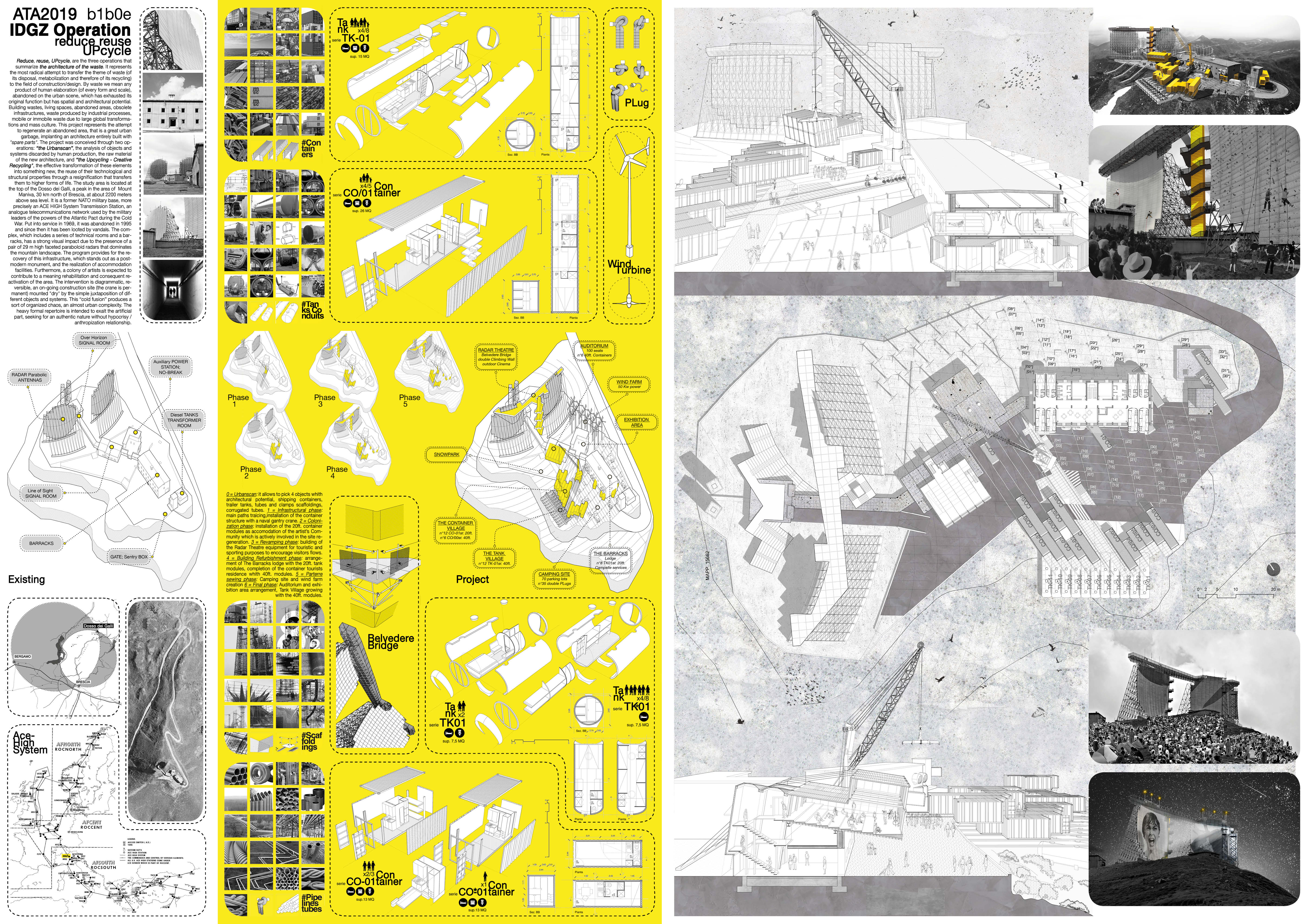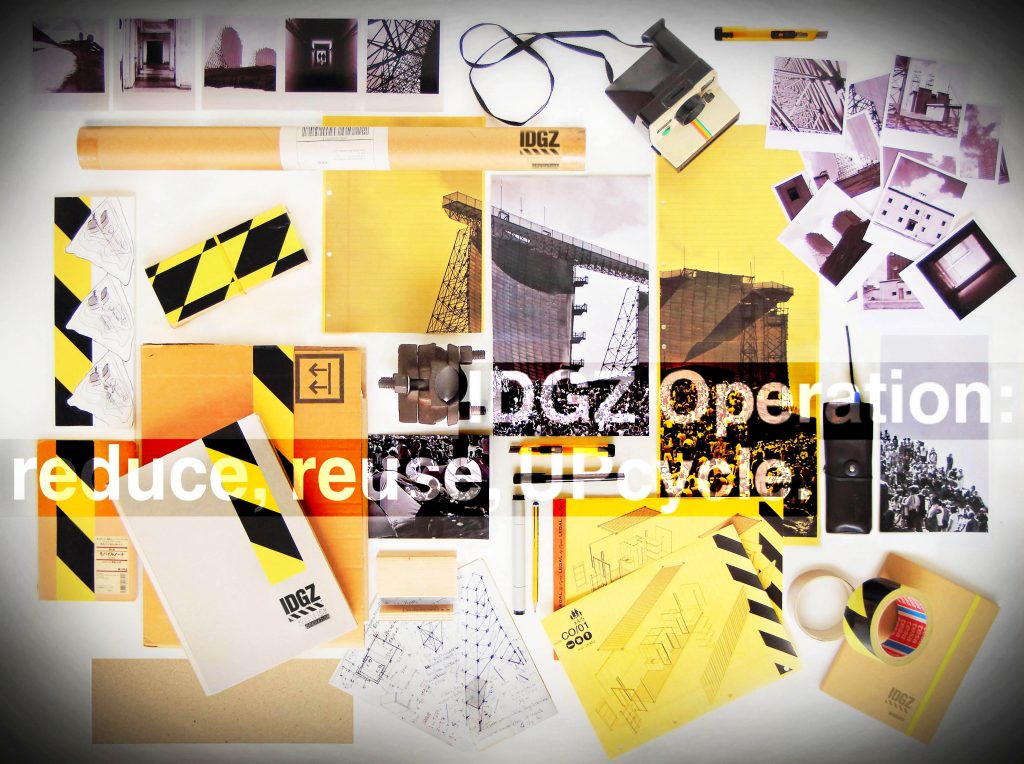Reuse, reduce, upcycle, are the three operations that summarize the architecture of the waste. It represents the most radical attempt to transfer the theme of waste (of its disposal, metabolization and therefore of its recycling) to the field of construction/design.
By waste we mean any product of human elaboration (of every form and scale), abandoned on the urban scene, which has exhausted its original function but has spatial and architectural potential. Building wastes, living spaces, abandoned areas, obsolete infrastructures, waste produced by industrial processes, mobile or immobile waste due to large global transformations and mass culture.
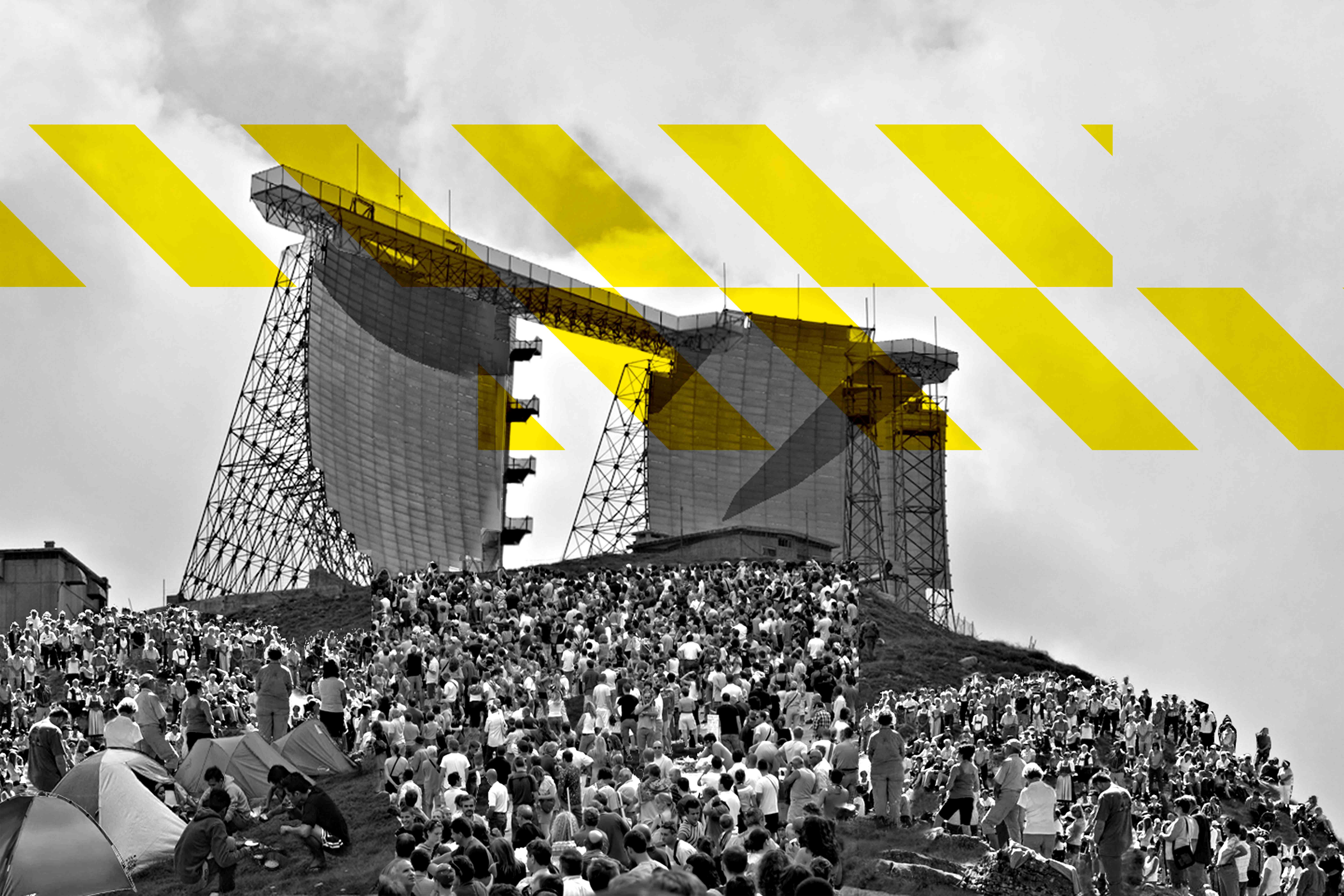
This project represents the attempt to regenerate an abandoned area, that is a great urban garbage, implanting an architecture entirely built with "spare parts" (shipping containers, trailer tanks, tubes and clamps scaffoldings, corrugated tubes). The project was conceived through two operations: “the Urbanscan”, the analysis of objects and systems discarded by human production, the raw material of the new architecture, and “the Upcycling - Creative Recycling", the effective transformation of these elements into something new, the reuse of their technological and structural properties through a resignification that transfers them to higher forms of life.
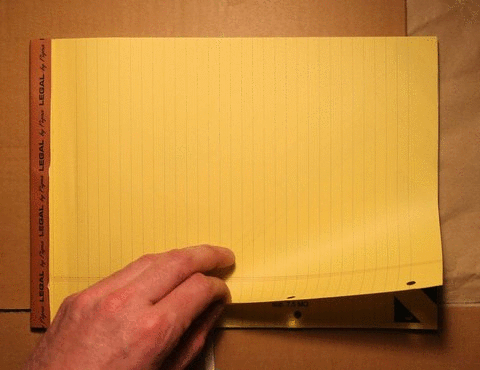
The study area is located at the top of the Dosso dei Galli, a peak in the area of Mount Maniva, 30 km north of Brescia, at about 2200 meters above sea level. It is a former NATO military base, more precisely an ACE HIGH System Transmission Station, an analogue telecommunications network used by the military leaders of the powers of the Atlantic Pact during the Cold War. Put into service in 1969, it was abandoned in 1995 and since then it has been looted by vandals. The complex, which includes a series of technical rooms and a barracks, has a strong visual impact due to the presence of a pair of 29 m high faceted paraboloid radars that dominates the mountain landscape. The program provides for the recovery of this infrastructure, which stands out as a postmodern monument, and the realization of accommodation facilities. Furthermore, a colony of artists is expected to contribute to a meaning rehabilitation and consequent reactivation of the area. The intervention is diagrammatic, reversible, an on-going construction site (the crane is permanent) mounted "dry" by the simple juxtaposition of different objects and systems. This “cold fusion” produces a sort of organized chaos, an almost urban complexity. The heavy formal repertoire is intended to exalt the artificial part, seeking for an authentic nature without hypocrisy / anthropization relationship.
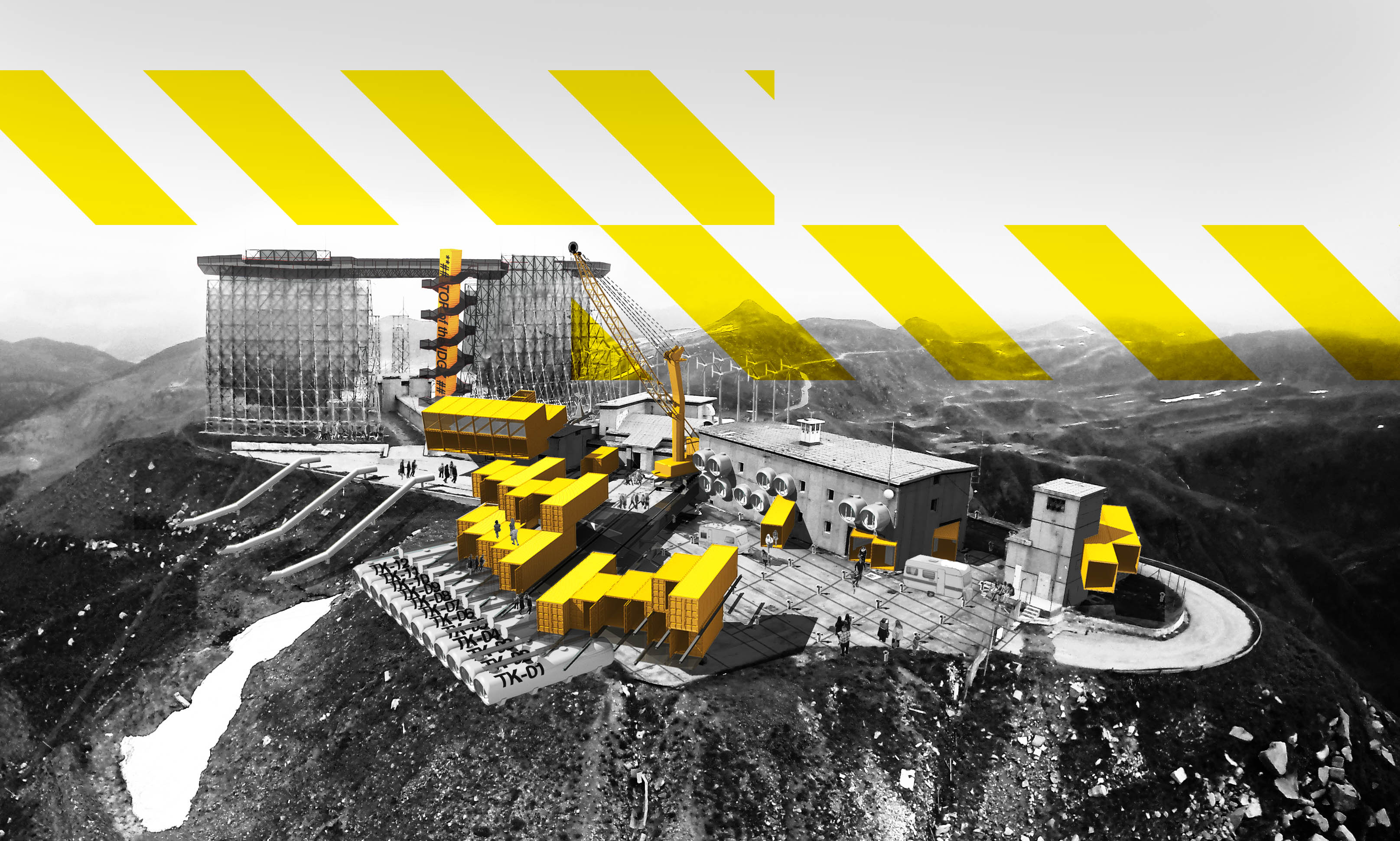
The Board:
